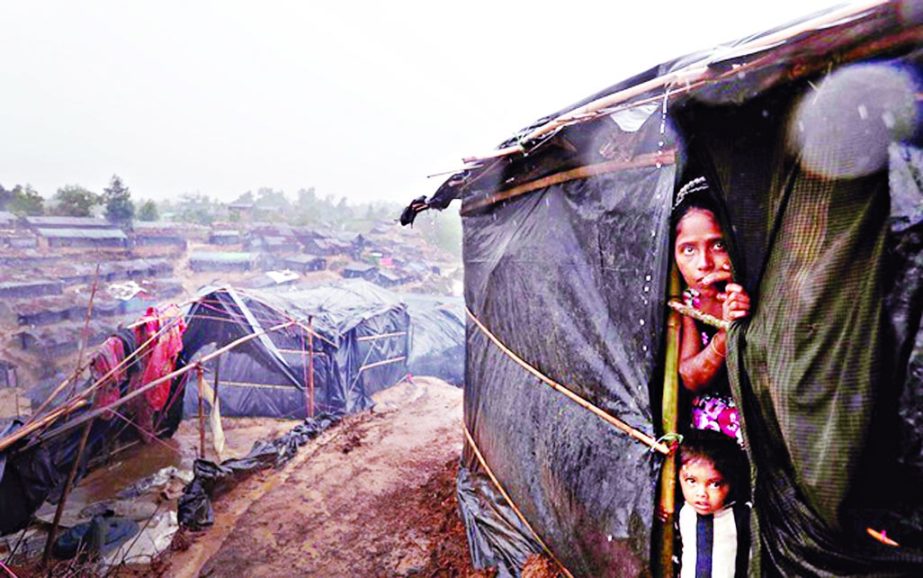
Kazi Zahidul Hasan :
Aid agencies are scrambling to respond to the influx of Rohingya refugees who fleeing Myanmar into Bangladesh to escape persecution and violence at their home.
“We’re ramping up food distribution and other services to the Rohingya refuges. But still it is inadequate to support them,” Oxfam Bangladesh’s Interim Country Director M B Akhter told media on Sunday.
Around 40,000 Rohingya have entered Bangladesh in the last three weeks and aid organisations struggle to support the huge number of refugees.
The International Organisation of Migration (IOM) earlier said the flow of Rohingyas into Bangladesh was “unprecedented”.
“They have no clean drinking water and no food. They are homeless and hungry following a long and treacherous journey across the border. Many are now sleeping under open skies, by roadsides and in forests, with no protection,” Akhter said.
The Oxfam Country Director said that aid agencies are struggling to cope with the huge number of refuges as their capacity and resources were insufficient to cover the needs of all people that currently needed humanitarian assistance.
Oxfam planned to help 200,000 people, approximately half of the number of Rohingya people who had recently crossed into the region. The crisis is so severe at the UNCHR run camps (Kutupalong and Nayapara) in the Cox’s Bazar where the number of refugees has doubled since August 25.
The two refugee camps in Cox’s Bazar in south-east Bangladesh – home to nearly 34,000 Rohingya refugees before this influx – are now bursting at the seams. The population has more than doubled in two weeks, totaling more than 70,000, the UNCHR said.
It said the capacity of the camps is already exhausted. Refugees are now squatting in makeshift shelters that have mushroomed along the road and on available land in the Ukhiya and Teknaf areas.
“They are in need of shelter, food, water and healthcare urgently,” said UNHCR spokesperson Duniya Aslam Khan.
Aid workers said among the Rohingya refuges, women, children, older people and those with disabilities were especially vulnerable and they are in emergency need of food and shelter. But they are not getting aid due to lack of official oversight and coordination among the aid agencies.
“There are more people than food so it is very chaotic,” said Sunabhan (44), who arrived in Bangladesh with her family 10 days ago after fleeing the violence that killed her husband.
She was among the hungry Rohingya refugees near the camp in Kutupalong.
“The strong ones run to the trucks and they get the food first, it is more difficult for women and children,” added Sunabhan, another of four.
The United Nations (UN) said this week there was an urgent need for a coordinated response to the massive influx of desperate people, most of whom have still had no assistance from aid agencies or the state.
“The current distribution methods make it impossible to ensure that aid reaches those who need it most,” an aid worker told The New Nation on Sunday asking not to be named.
He said each time a truck pulls up, the refugees, including women and children, scramble to grab the food parcels, water bottles and clothing the volunteers throw into the desperate crowd. “This is not the right way to aid distribution. It also raise concerns about the safety of the refugees rushing for aid,” he added.
The aid worker further said the authorities should set up drop-off points for aid distribution to avert any untoward situation. Bodies should also be formed to coordinate aid efforts in the camps.

